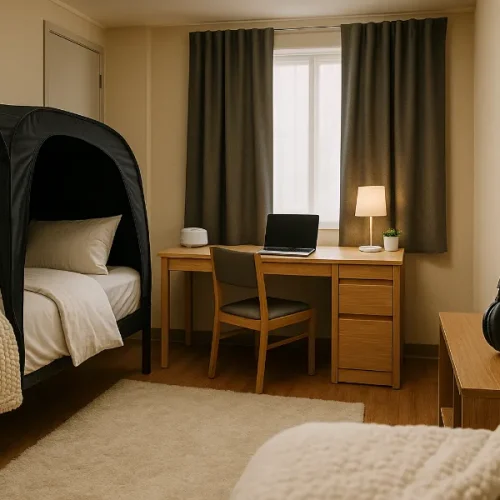
When a family chooses cremation, the absence of a traditional burial site can leave loved ones searching for tangible ways to process their loss. This alternative farewell presents both challenges and opportunities for those managing grief. The question becomes not whether healing is possible, but rather how to create meaningful connections with cherished memories when conventional mourning rituals no longer apply. Understanding these unique pathways forward offers essential guidance during life’s most difficult changes.
Understanding the Grieving Process After Cremation
Loss through cremation carries no less weight than traditional burial, yet many people find themselves unprepared for the unique emotional landscape it creates. The absence of a traditional gravesite can intensify feelings of disorientation, leaving mourners without a physical place to focus their grief. The cremation process itself may trigger unexpected emotions. Some feel relief at avoiding prolonged funeral arrangements, while others experience guilt for choosing what they perceive as a less ceremonial option. These contradictory feelings are normal aspects of grief.
Mourning follows no timeline. Whether emotions surface immediately or months later, each person’s journey remains valid. Understanding that cremation simply represents a different path through loss, not a lesser one, helps mourners accept their experiences without judgment.
The Emotional Impact of Saying Goodbye Through Cremation
How does the finality of cremation shape the farewell experience? The irreversible nature of cremation creates a distinct emotional timeline for mourners. Unlike burial, where some envision a preserved body, cremation transforms the physical form immediately, often intensifying feelings of loss and permanence. This finality can trigger conflicting emotions. Some families find relief in the swift, clean process, viewing it as a peaceful changeover. Others struggle with the absence of a traditional gravesite visit, feeling unmoored without a specific location for remembrance.
The witnessing of cremation, when permitted, profoundly affects participants. Those present often report a sense of closure, while those absent may experience lingering questions or regret. The receipt of ashes becomes a pivotal moment, converting abstract loss into tangible reality and marking the beginning of active grief work.
Meaningful Ways to Honor and Remember Loved Ones
After receiving cremated remains, many families seek tangible ways to maintain connection with the deceased. Memorial jewelry offers an intimate option, allowing small portions of ashes to be incorporated into pendants, rings, or bracelets worn daily. Creating dedicated memorial spaces at home provides a focal point for remembrance. These areas might include photographs, cherished belongings, and decorative urns that reflect the person’s personality.
Scattering ceremonies in meaningful locations offer closure while honoring the deceased’s wishes. Whether at sea, in gardens, or favorite destinations, these rituals provide opportunities for family gathering. Some families commission memorial artwork, transforming ashes into glass sculptures or incorporating them into paintings. Tree planting with biodegradable urns creates living tributes that grow over time, symbolizing enduring legacy and natural renewal.
How Memorial Services and Rituals Support Healing
When families gather to commemorate a loved one who has been cremated, the collective experience of grief transforms into shared healing. Memorial services provide structure during emotional chaos, offering designated time and space for mourning. These gatherings validate feelings while connecting attendees through shared memories and loss. Rituals serve practical psychological purposes. Lighting candles, scattering ashes, or creating memory tables gives mourners tangible actions when grief feels overwhelming. Some families choose meaningful options like cremation burial at sea, allowing loved ones to be laid to rest in serene natural settings that symbolize peace and continuity. Such ceremonies mark the shift from life to death, helping participants acknowledge reality while finding closure.
The communal aspect proves particularly therapeutic. Hearing others’ stories about the deceased reinforces their impact and legacy. Support networks naturally form as attendees exchange contact information and commit to staying connected. These relationships often sustain families through subsequent grief waves, providing ongoing comfort beyond the initial service.
Practical Tips for Coping with Grief in Daily Life
While memorial services provide concentrated moments of healing, grief persists in the mundane hours between ceremonial gatherings. Establishing daily routines creates structure during emotional turbulence. Simple practices like morning walks, journaling thoughts, or preparing regular meals provide anchors when loss feels overwhelming. Physical activity releases endorphins that naturally combat depression and anxiety. Even fifteen minutes of movement helps process difficult emotions stored in the body. Some individuals also find comfort in using crystals to help with grief, as these natural stones can serve as grounding tools that promote calm and emotional balance during the healing process.
Connecting with supportive individuals, whether friends, family, or grief groups, prevents isolation. Sharing memories keeps the deceased present without dwelling in sorrow alone. Setting boundaries around grief work prevents burnout. Designating specific times for processing emotions, then engaging in other activities, allows necessary breaks from intense feelings. Seeking professional counseling provides specialized tools for maneuvering complicated grief responses that exceed normal coping mechanisms.
Seeking Support: Family, Friends, and Grief Counseling Options
Though grief feels intensely personal, healing rarely happens in isolation. Reaching out to trusted family members and friends provides essential emotional support during difficult moments. These connections offer practical help, shared memories, and simply someone to listen to without judgment. Professional grief counseling serves those struggling with overwhelming emotions or complicated grief. Licensed therapists specializing in bereavement provide structured guidance and coping strategies tailored to individual needs. Many funeral homes maintain referral lists for qualified counselors.
Support groups connect bereaved individuals with others experiencing similar losses. These gatherings, whether in-person or online, create safe spaces for honest expression and mutual understanding. Hospice organizations, religious institutions, and community centers frequently host grief support programs at no cost, making professional guidance accessible to those seeking structured healing environments.
Finding Peace and Comfort Through Lasting Tributes and Reflection
Creating lasting tributes transforms grief into meaningful action, providing tangible ways to honor a loved one’s memory. Memorial gardens offer peaceful spaces for reflection, incorporating cremated remains into soil that nourishes plants and flowers. Personalized keepsake jewelry holds small portions of ashes, keeping loved ones close during daily life. Charitable donations in the deceased’s name create positive legacies that extend their values and passions. Memorial scholarship funds, park benches with dedication plaques, or contributions to causes they supported provide ongoing impact.
Digital memorials allow family and friends to share stories, photos, and memories in accessible online spaces. Ritual activities like annual remembrance gatherings, releasing biodegradable urns in meaningful locations, or creating memory books help process grief while celebrating the life lived.
FAQs
No, the emotional weight of loss is the same, but cremation may feel different because there is no traditional gravesite to visit.
You can set up a small memorial area at home with photos, meaningful objects, and the urn to create a personal place for reflection.
Yes, many people experience mixed emotions, and acknowledging these feelings is a healthy part of the grieving process.
Options include scattering ceremonies, memorial jewelry, planting trees with biodegradable urns, or commissioning memorial artwork.
They create a shared space for remembering, expressing grief, and finding support from others who cared about the person.
Gentle routines like journaling, walking, or talking with trusted friends help provide stability and emotional grounding.
If emotions feel overwhelming or interfere with daily life, professional support can offer tools to manage and process grief more effectively.













